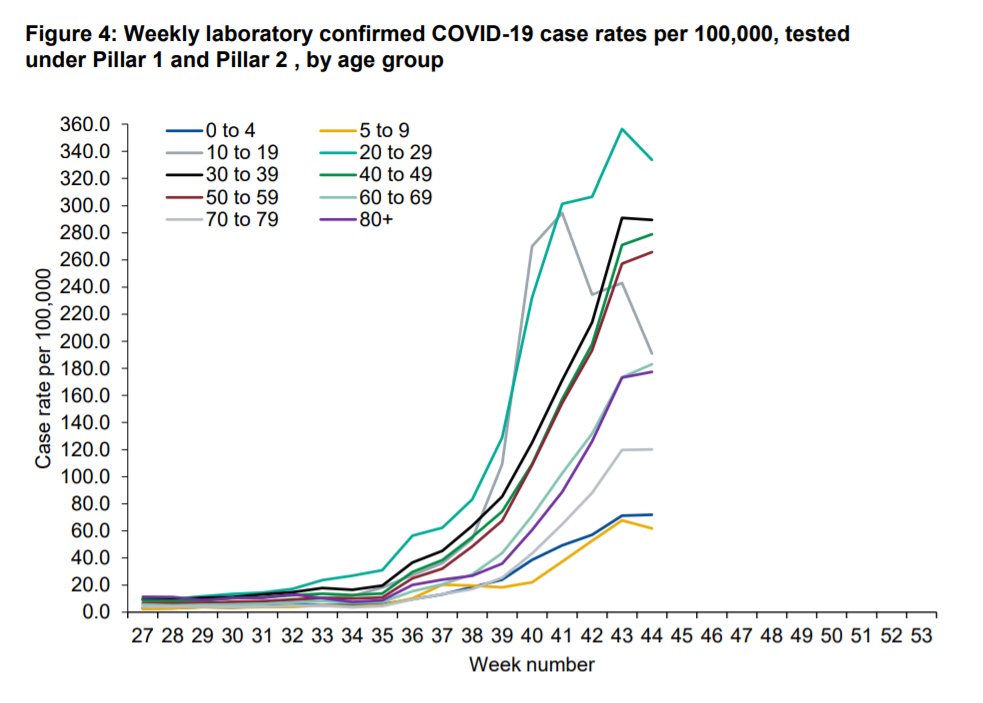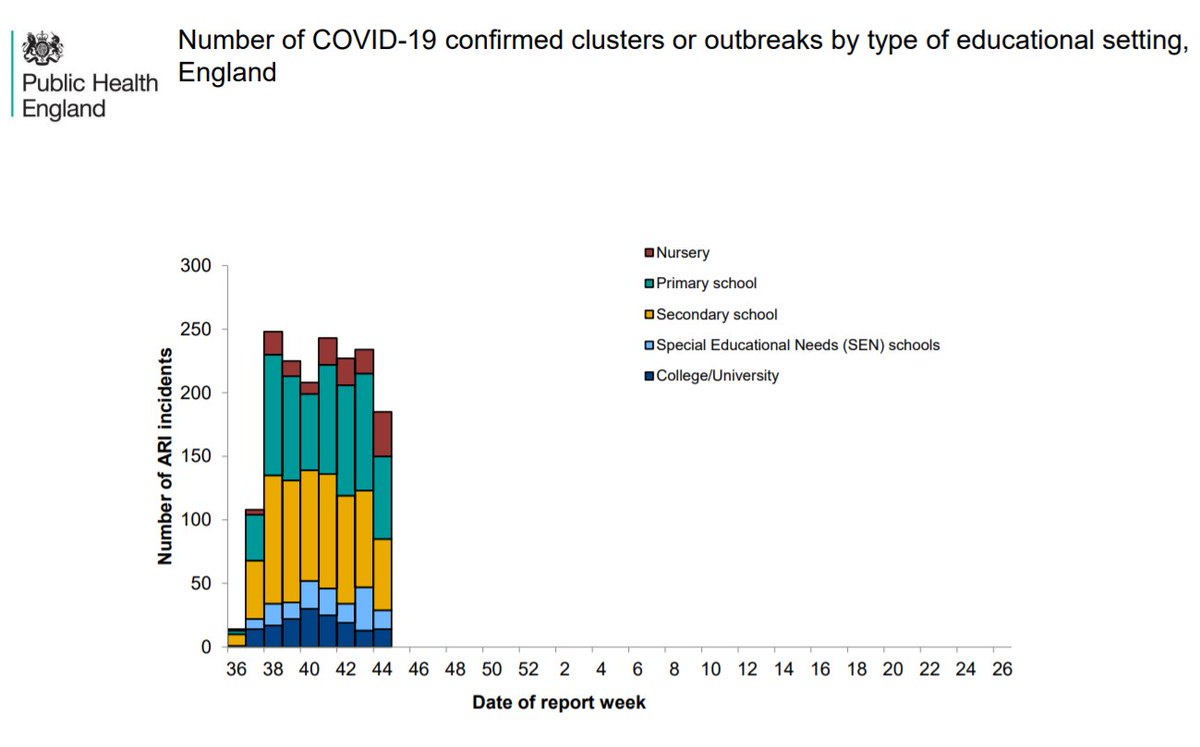
Really interesting pre print looking at school transmission in Northern Italy during the second surge
Suggests huge age dependant differences in risk of transmission in children in these settings (who would have guessed?!)
Let's take a look...
doi.org/10.1101/2020.1…
1/8
Suggests huge age dependant differences in risk of transmission in children in these settings (who would have guessed?!)
Let's take a look...
doi.org/10.1101/2020.1…
1/8
Detailed contact tracing of 43 cases
- 5 teachers
- 38 children
Whole classes tested regardless of symptoms, and swabbed a second time 10-14d later if the first was within 6 days of exposure
How much onward transmission?
2/8
- 5 teachers
- 38 children
Whole classes tested regardless of symptoms, and swabbed a second time 10-14d later if the first was within 6 days of exposure
How much onward transmission?
2/8
Pre school (6 kids, 2 teachers) - 0/156 (0%)
Primary school (14 kids) - 1/266 (0.44%)
Secondary school (23 kids, 5 teachers) - 38/572 (6.64%)
Notice a pattern here?
3/8
Primary school (14 kids) - 1/266 (0.44%)
Secondary school (23 kids, 5 teachers) - 38/572 (6.64%)
Notice a pattern here?
3/8
Infection prevention is important, in these schools:
- 1m between children
- Masks except when at desks in secondary schools (not mandatory in primary schools)
- Staggered entry/exit times to avoid crowing
- If classroom to small, rotas to half class size
4/8
- 1m between children
- Masks except when at desks in secondary schools (not mandatory in primary schools)
- Staggered entry/exit times to avoid crowing
- If classroom to small, rotas to half class size
4/8
A useful study which reflects knowledge from early in the pandemic and what we observe now in many countries
Risk of transmission appears much lower for younger children than older children/adolescents - in spite of lack of mandatory masking for younger kids
Why is that?
5/8
Risk of transmission appears much lower for younger children than older children/adolescents - in spite of lack of mandatory masking for younger kids
Why is that?
5/8
Part will be mixing profiles; older children mix more. But we should expect a larger proportion of infections based on that
Part seems very likely to be the reduced susceptibility of younger children than older children to getting infected
Could there be something else?
6/8
Part seems very likely to be the reduced susceptibility of younger children than older children to getting infected
Could there be something else?
6/8
Some people are theorising droplet transmission might be similar from children to adults, hence similar household transmission rates
But - their ability to generate aerosols might be much lower due to their low symptom burden, small size, lung volume and expiratory force
7/8
But - their ability to generate aerosols might be much lower due to their low symptom burden, small size, lung volume and expiratory force
7/8
This would mean you would probably need prolonged, close contact to a small child to acquire infection, and lower risk of larger scale aerosol transmission events
An interesting hypothesis which would explain observations, but needs some empirical evidence!
End
8/8
An interesting hypothesis which would explain observations, but needs some empirical evidence!
End
8/8
• • •
Missing some Tweet in this thread? You can try to
force a refresh









